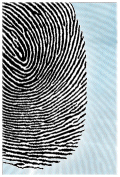![]()
Fingerprint
 A digital fingerprint is a cryptographic
checksum of constant length. Steganos uses a 160 bit checksum which is generated by the
widely acknowledged SHA-1 algorithm.
A digital fingerprint is a cryptographic
checksum of constant length. Steganos uses a 160 bit checksum which is generated by the
widely acknowledged SHA-1 algorithm.
Fingerprints are useful for detecting differences between two files. Two persons may generate the digital fingerprint of a file and compare the 40 digits of the fingerprint. If two local files are to be compared you can do this via drag and drop. Refer to Extended file properties.
Are the two fingerprints identical so are the two files. You can be absolutely sure that the two files are identical. No virus has entered the file, no hacker could have modified it.
An attacker is unable to modify the file without modifying the fingerprint, neither he can find two files with a similar fingerprint (each fingerprint is unique). Modifying a single byte in the file leads to a completely different fingerprint (avalanche effect).
Note: The fingerprint refers to the file's contents and its name (without path). Date and time stamp and file attributes are ignored.
Related topics
Numeric
dimensions
Algorithms used in Steganos
Fingerprints in the Extended file properties
Fingerprints in the password management